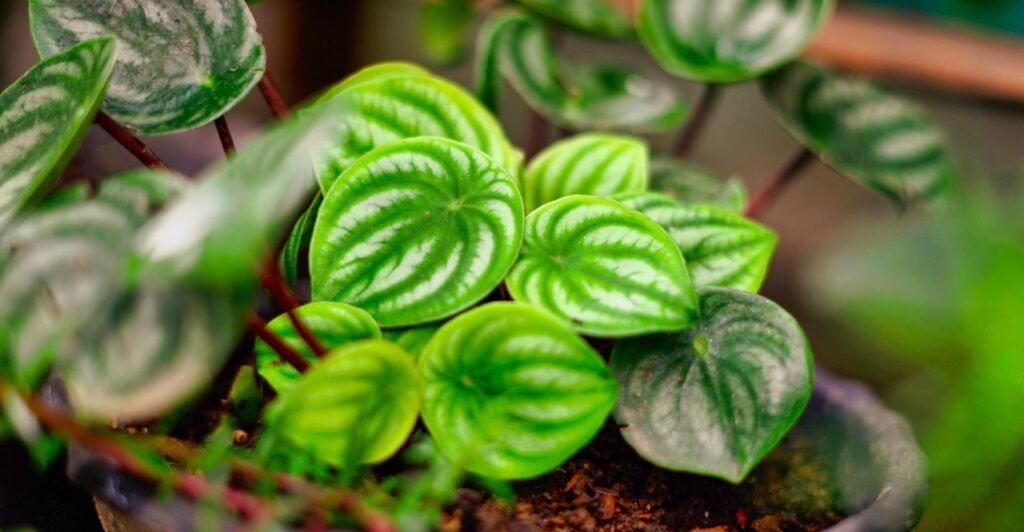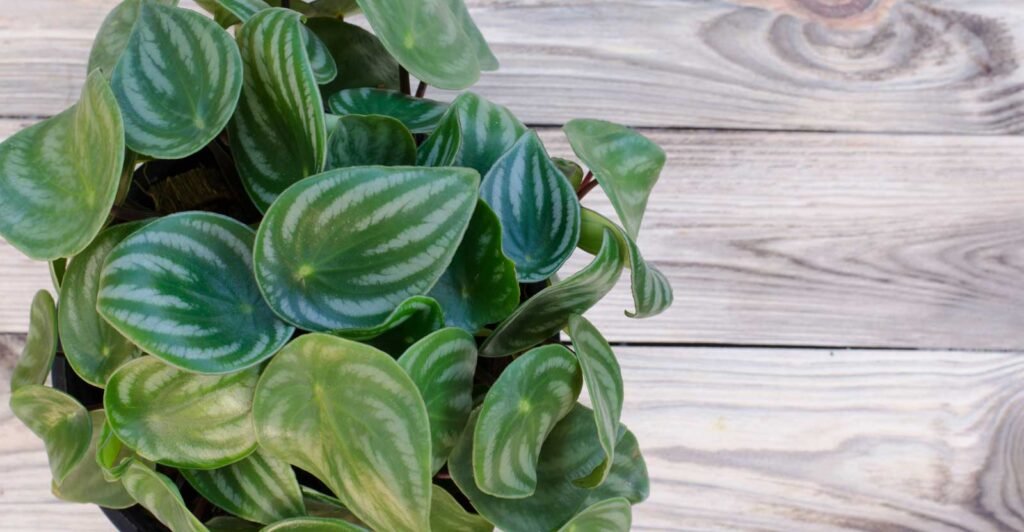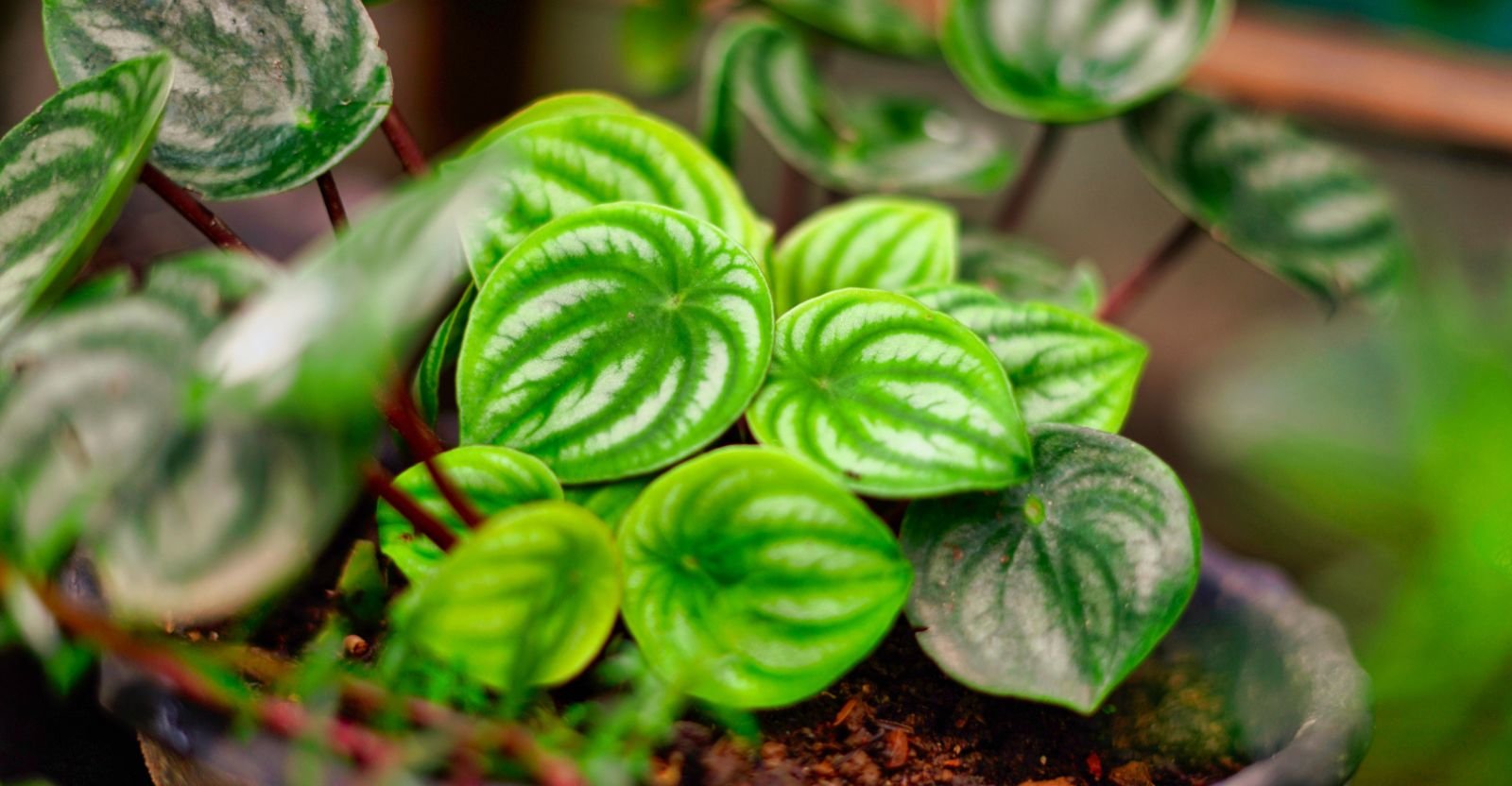
Peperomia Plant Care Guide
If you’ve ever seen a lovely plant sitting on a windowsill or a shelf at your local nursery, chances are you’ve spotted a peperomia. While the name might not be familiar, these plants are a popular choice for indoor spaces because of their attractive foliage and easy-going nature.
Peperomias are small, hardy plants native to Central America and Mexico, though they’ve been popular in the U.S. for over 100 years. They’re often seen in homes, greenhouses, and offices, bringing a splash of green without much fuss.
If you’re interested in learning how to care for a peperomia plant and keep it healthy, you’re in the right place! Let’s dive into everything you need to know to grow this versatile houseplant.
What is a Peperomia Plant?

Peperomias are a diverse group of plants, with over 1,000 species found worldwide. They’re commonly grown in pots or hanging baskets and are known for their unique, thick, fleshy leaves that come in various shapes and sizes. Some varieties have intricate variegated patterns, while others feature solid-colored leaves with smooth or textured surfaces.
A popular type of peperomia is the “Ripple” variety, which has puckered, ruffled leaves. These plants are typically small, making them ideal for indoor spaces like apartments or offices, and many are even succulent-like in nature, storing water in their leaves to survive during dry periods.
Plant Growing Summary

| Factor | Growth Condition |
|---|---|
| Soil | Well-drained, sandy soil |
| Water | Water once a week |
| Sunlight | Partial, indirect sunlight |
| Temperature | 65°F – 85°F (18°C – 29°C) |
| Fertilizer | Balanced liquid fertilizer (10-10-10) |
| Propagation | Stem and leaf cuttings |
| USDA Zone | 10-12 |
Do Peperomia Plants Flower?
:strip_icc()/how-to-grow-and-plant-peperomia-Ripple-Peperomia_04-86c653965a1249cc869754e4831cce84.jpg)
Technically, yes—peperomia plants do flower. They produce small, spiky flowers that lack petals and sepals. These tendrils emerge from within the leaves and grow toward light. However, most peperomia varieties are prized more for their striking foliage than for their flowers. If you see a flower on your plant, it’s likely just an added bonus rather than the primary reason it’s grown.
How Big Do Peperomia Plants Get?

Peperomias are typically small, making them perfect for compact spaces. Most species only grow to about 1 to 2 feet tall. Some varieties may get a little taller, but none of them are massive. This makes them ideal for container gardening, hanging baskets, or smaller indoor setups.
Popular Peperomia Varieties

Peperomias come in a variety of shapes, sizes, and colors. Here are a few popular ones you may want to consider for your indoor garden:
- Peperomia obtusifolia (Baby Rubber Plant): Known for its glossy, green, rounded leaves. It’s great for beginners because it’s low-maintenance.
- Peperomia caperata: A decorative, heart-shaped plant with colorful, variegated leaves that make it a striking addition to any room.
- Peperomia argyreia (Watermelon Peperomia): Featuring thick, green leaves with silver stripes, this variety is popular for its beautiful foliage.
- Peperomia clusiifolia: With its long red tendrils and fleshy, translucent leaves, this one adds a unique touch to any collection.
- Peperomia rosso: Known for its red, pink, or green leaves, this plant is an excellent choice for containers and small gardens.
- Peperomia polybotrya: A popular variety with heart-shaped leaves that are covered in soft white hairs, making it a lovely indoor plant.
How to Care for Your Peperomia

Peperomias are pretty easy to care for, and with the right conditions, they can thrive indoors for years. Here’s a breakdown of how to keep your plant happy:
Best Soil for Peperomia
Peperomias like well-drained, loose soil. You can use an orchid potting mix and mix in some peat moss and perlite for moisture retention. Ensure the pot you use has proper drainage holes to prevent water from sitting at the bottom, which could cause root rot.
Repotting Peperomia

Peperomias don’t need frequent repotting. In fact, they’re best repotted every two years. When repotting, gently remove the plant from its old pot, being careful not to damage the roots. Place the plant in a slightly larger pot with fresh soil and water thoroughly.
How Often Should You Water Peperomia?
Peperomias are not big fans of overwatering, so make sure the soil is dry on top before watering. Water once a week, but make sure the soil is well-drained. Overwatering can lead to root rot, which is often the cause of wilting or yellowing leaves.
Sunlight Requirements

Peperomias prefer indirect, filtered light. They don’t need direct sunlight, which can burn their leaves. They do well in rooms with bright, indirect light or under a grow light if you don’t have access to natural light. The ideal temperature range is 65°F to 85°F (18°C to 29°C).
Fertilizing Peperomia
Peperomias aren’t heavy feeders, but they can benefit from occasional fertilizing. Use a balanced, water-soluble fertilizer (10-10-10) once a month during the growing season (spring and summer). Avoid over-fertilizing, as too much can lead to yellowing or stunted growth.
How to Propagate Peperomia
You can propagate peperomias from leaf or stem cuttings. Simply cut a healthy leaf or stem, place it in water or moist soil, and wait for roots to form. Once the roots are established, transplant the cutting into a small pot with fresh soil.
Common Problems and Solutions

Why is My Peperomia Wilting?
Wilting is often caused by under-watering or over-watering. Check if the soil is dry or overly soggy. If the soil is too wet, allow it to dry out before watering again. If the soil is too dry, give the plant a good soak and adjust your watering schedule moving forward.
Is Peperomia Toxic to Pets?
The good news is, peperomia is not toxic to pets like cats or dogs. However, as with any plant, you should still keep it out of reach to prevent your pets from chewing on it.
FAQs for Growing and Caring for Peperomia Plants
1. What are the ideal growing conditions for peperomia plants?
Peperomias thrive in bright, indirect light. They prefer temperatures between 65°F and 75°F (18°C – 24°C) and moderate humidity. They do well in well-draining, loamy soil that retains moisture but doesn’t become soggy. Avoid placing them in direct sunlight, as it can scorch their delicate leaves.
2. How often should I water my peperomia?
Peperomias are sensitive to overwatering. Water your plant when the top 1-2 inches of soil are dry. In the winter months, you can reduce watering as the plant’s growth slows down. Always ensure the pot has proper drainage to avoid root rot, which is a common problem for these plants.
3. Can peperomias tolerate low light?
Peperomias can tolerate low light for short periods but will grow best in bright, indirect light. If your plant is kept in low light, its growth may slow, and the leaves may become less vibrant. To encourage optimal growth and vibrant foliage, try to place it in a location where it gets plenty of indirect light.
4. What type of soil is best for peperomia plants?
Peperomias prefer well-draining, airy soil. A general indoor plant mix or a cactus/succulent mix works well for peperomias, as it allows excess water to drain and prevents the roots from becoming waterlogged. You can also add perlite or sand to improve drainage.
5. How do I propagate peperomias?
Peperomias can be easily propagated through stem or leaf cuttings. Take a healthy cutting with a few leaves attached, and place it in a glass of water or directly into a pot with well-draining soil. If using water, once the roots develop, transfer the cutting into soil. Keep the cutting in a warm, bright area while it roots.
6. Why are the leaves on my peperomia turning yellow?
Yellowing leaves on a peperomia plant are often a sign of overwatering. Ensure the soil is drying out between waterings and that the plant is not sitting in water. Yellowing can also be caused by poor drainage or inadequate light. Check that your plant is getting enough indirect sunlight and that the soil is draining properly.
7. How often should I fertilize my peperomia?
Peperomias are not heavy feeders. You can fertilize them once a month during the growing season (spring and summer) with a balanced, water-soluble fertilizer diluted to half strength. During the fall and winter, reduce or stop fertilizing, as the plant’s growth slows down.
8. Can peperomias be grown in containers?
Yes, peperomias are perfect for container gardening. They do well in pots, especially small to medium-sized ones, and they thrive when their roots are a bit confined. Just ensure the container has drainage holes to allow water to escape and prevent root rot.
9. How do I prevent pests on my peperomia plant?
Peperomias are generally pest-resistant but can occasionally attract aphids, mealybugs, or spider mites. To prevent pests, regularly inspect the leaves, especially the undersides, for any signs of infestation. Wipe the leaves with a damp cloth or use insecticidal soap or neem oil to treat any problems.
10. Can peperomias be toxic to pets?
No, peperomias are non-toxic to pets, making them a safe plant for homes with cats and dogs. While they are not harmful to animals, it’s still best to prevent pets from chewing on the leaves to avoid any digestive issues or irritation.
11. Why are my peperomia’s leaves curling or wilting?
Curling or wilting leaves on a peperomia plant can be a sign of underwatering, pest infestation, or stress from sudden temperature changes. Ensure the plant is watered regularly, but not excessively. If the plant is in an area with drafts or temperature fluctuations, move it to a more stable environment. Also, check for any pests that could be affecting the plant’s health.
12. Can I prune my peperomia to keep it compact?
Yes, peperomias can be pruned to encourage a bushier, more compact shape. Use clean, sharp scissors or pruning shears to trim back any leggy or damaged stems. Pruning can also help to remove any dead leaves, keeping the plant looking fresh and tidy.
Conclusion
Peperomias are a fantastic addition to any home. With their diverse and attractive foliage, they’re sure to brighten up your indoor space. Caring for them is simple as long as you provide them with the right soil, light, and watering conditions. With a little attention, your peperomia will thrive for years, adding beauty and charm to your home.

